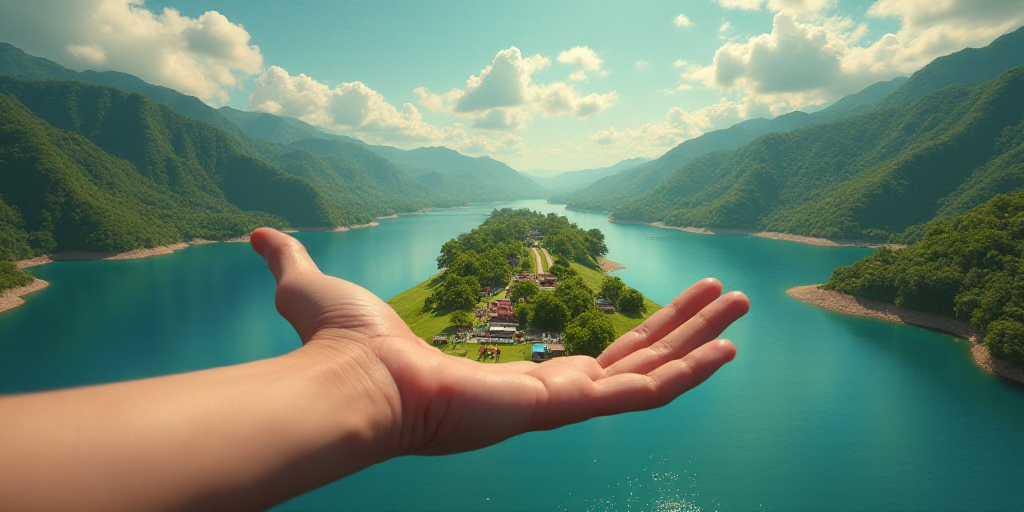Introduction to Claudia Gómez Godoy and Her Mission
Claudia Gómez Godoy, the Commissioner for Restoration and Sanitation of the Lerma-Santiago River, aims to establish a public policy for river restoration and change the perception of these water bodies. Instead of viewing them as mere drainage extensions, she envisions rivers as sources of life and environmental services.
The Goal: River Restoration and Policy Development
Gómez Godoy’s primary objective is to lay the groundwork for a river restoration policy and alter the current approach to these vital water resources. This involves recovering ecological uses in wetlands and forests through a series of interventions with a basin-focused approach.
Milestones and Timeline
- By 2025, establish the foundation for river intervention policy.
- Restore initial intervention tracts and create regulations for further restoration.
- Explore the possibility of a water reuse policy for both environmental and industrial processes.
In 2025, over 500 million pesos will be allocated for the Lerma-Santiago river’s initial ecological rescue efforts.
Lerma-Santiago River Intervention Plan
The Lerma-Santiago river, spanning 1,360 kilometers from its source in Almoloya del Río, Estado de México, to its outlet in the Pacific Ocean in San Blas, Nayarit, will be divided into segments for intervention, tackled in stages.
First Phase: Diagnostic and Master Plan Development
The initial phase involves gathering diagnostics from academics, authorities, and local communities along the riverbanks to create a master intervention plan.
Almost all necessary elements are in place for the comprehensive diagnostic and master restoration plan for urban rivers and complex segments.
These plans should be ready by early next year, once the required budget, restoration calendar, and saneamiento details are clear.
Ongoing Works in 2025
Lerma River:
- Invest 50 million pesos in desazolve operations at critical points to prevent flooding and improve canal mobility.
- Conduct water flow and federal zone delimitation studies.
Santiago River:
- Allocate around 450 million pesos for constructing missing treatment plants in certain municipios and building collectors in the first intervention segment (Ocotlán to El Salto and Juanacatlán industrial zone).
- Initiate humedal intervention studies in El Ahogado, El Salto, Jalisco.
Lago de Chapala:
- Carry out supervision, monitoring, and integration of studies to design a master rehabilitation plan.
- Collaborate with the University of Guadalajara to develop a specific sanitation and rehabilitation plan for public spaces like malecones and linear parks.
Addressing Contamination Concerns
Gómez Godoy mentioned that numerous municipalities have constructed wastewater treatment plants, but many remain non-operational due to design flaws, unpaid electricity bills, or lack of collectors. Consequently, these municipalities discharge untreated wastewater into the rivers.
To tackle this, a municipality-by-municipality and state-by-state diagnostic is underway to identify the number and condition of wastewater treatment plants. The goal is to assist states and municipalities in ensuring these facilities function correctly, which may involve reengineering and conversions.
In the meantime, a request has been made to the Federal Electricity Commission (CFE) to change the industrial tariff for wastewater treatment plants to a services tariff, reducing electricity costs.
Simultaneously, efforts are being made to transition 13 operating Santiago river plants to solar panel energy.
Improper Waste Disposal
Many municipalities lack proper waste disposal facilities, like sanitary landfills, causing excessive river waste deposition. For instance, the first segment of the Lerma river spans 23 municipios from its source to Presa Alzate, with only a few operational sanitary landfills.
To address this, discussions are being held with authorities, communities, and private sector representatives to devise solutions. Some businesses have proposed taking waste, such as the Michelín tire shop offering to collect tires, and others agreeing to collect cans and bottles.
Key Questions and Answers
- What is Claudia Gómez Godoy’s role? She is the Commissioner for Restoration and Sanitation of the Lerma-Santiago River, working towards a public policy for river restoration.
- What are the main objectives of her mission? To change perceptions of rivers as mere drainage extensions and instead view them as sources of life and environmental services. She aims to establish a river restoration policy and alter the current approach.
- What are the key milestones for river restoration? By 2025, foundational work on river intervention policy will be completed, with initial restoration tracts restored and regulations set for further restoration. A water reuse policy for both environmental and industrial processes will also be explored.
- How are wastewater treatment plants being addressed? A diagnostic is underway to identify and rectify issues with non-operational plants. Efforts are being made to reduce electricity costs and transition some plants to solar energy.
- What is being done about improper waste disposal in rivers? Discussions are ongoing with stakeholders to devise solutions, including some businesses proposing to collect specific types of waste.






